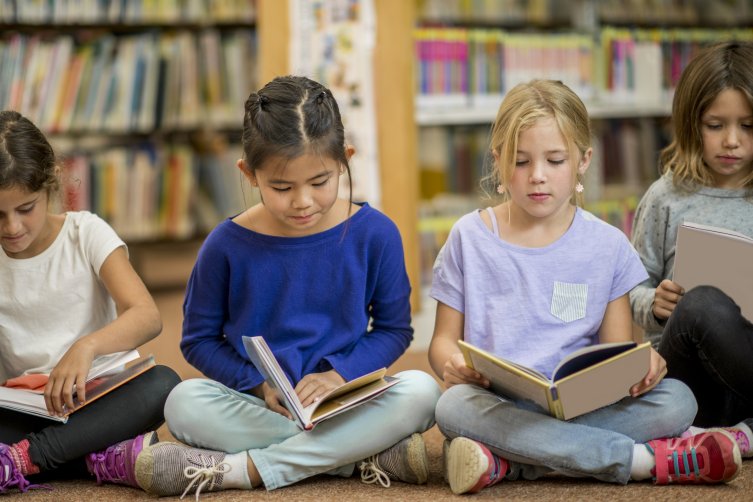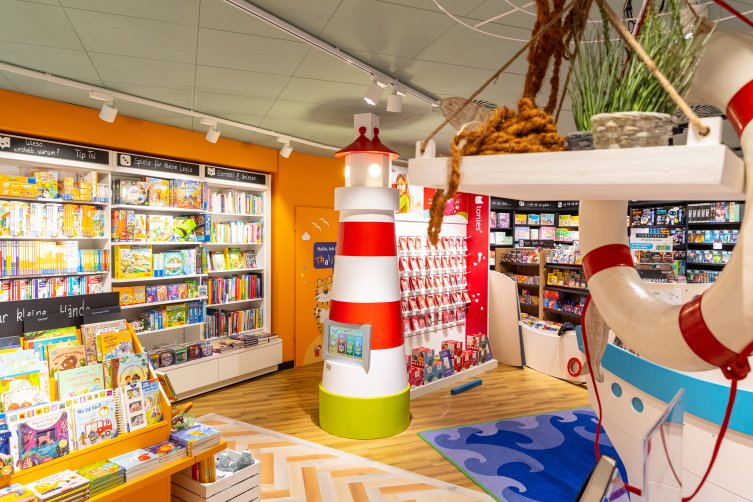The advances being made by the book trade at the moment are by no means great leaps, but rather a series of small steps necessitating a considerable degree of patience and perseverance on the part of bricks-and-mortar bookshops. As shown by the latest figures collected by Media Control exclusively for Börsenblatt, the task facing the industry continues to be to close the gap in turnover caused by the lockdown to the greatest extent possible. This ambitious goal has now again moved a little bit closer; the decline in turnover across all sales channels from the beginning of the year up to and including week 21 (which encompassed “Christi Himmelfahrt”, a national holiday celebrated in week 22 in 2019) was at 12.4 percent, thus reducing the shortfall by one-half of a percentage point as compared to weeks 1 to 20. The results would have been significantly better were it not for the national holiday that week.
A glance at individual product categories shows that fiction books managed to reduce their shortfall from minus 11.3 percent in weeks 1 to 20 to minus 10.8 percent in weeks 1 to 21, while children’s books and young adult literature were able to work their way up from minus 1.7 percent to minus one percent. Books for young people have returned to almost the same level as in 2019! In contrast, other product categories are engaged in a much larger battle against the impact of the pandemic; first and foremost travel books, which moved up only slightly from minus 37 to minus 36.6 percent.
Average book price rising
A welcome boost was provided across all product categories by an increase in book prices, which were 1.1 percent higher year-on-year in weeks 1 to 21 (€13.76 compared to €13.61). Children’s books and young adult literature enjoyed a price increase of 3.6 percent, with self-help and DIY books experiencing a 3.5 percent rise and the average price of non-fiction books sold increasing by one percent.
Unit sales, which were hit hard by the coronavirus lockdown, are also recovering bit by bit. While the year-on-year difference in sales in weeks 1 to 20 was still at minus 13.8 percent, it moved up to minus 13.4 percent in weeks 1 to 21. Unit sales in the fiction category, which commanded a 35.7 percent share of sales, were at minus 11.9 percent by the end of week 21, thus catching up by 0.5 percentage points. Children’s books and young adult fiction improved from minus 4.9 percent to minus 4.4 percent.
Long road ahead for bricks-and-mortar shops
Bricks-and-mortar bookshops are also slowly making their way back. They were able to reduce their year-on-year shortfall in turnover from 18.8 percent in weeks 1 to 20 to 18.2 percent in weeks 1 to 21, thus edging their way forward by 0.6 percentage points. Fiction books improved from minus 15.7 to minus 15 percent, while children’s books and young adult literature were able to recover one full percentage point, landing at minus 15.3 percent.
Things are looking relatively rosy with regard to price developments, which showed a year-on-year increase of 2.9 percent in weeks 1 to 21, with prices climbing from €13.44 to €13.82. Children’s books and young adult literature enjoyed above-average growth, with prices rising by 4.5 percent. Similar growth was seen in the price of self-help and DIY books. Unit sales also improved in weeks 1-21 as compared to weeks 1-20, moving up from minus 21.1 percent to minus 20.4 percent.
Week 21 in the red, however...
Bookshops in most federal states have been reopened for five weeks now, and the most recent week back in business ended with a 1.2 percent year-on-year shortfall in turnover across all sales channels. It should be noted, however, that Germany celebrated the “Christi Himmelfahrt” national holiday on Thursday 21 May 2020, meaning that this week had one less sales day than in 2019. As roughly 15 percent of weekly turnover is usually generated on Thursdays, it is clear that week 21 would most certainly have seen a significant increase in turnover were it not for the national holiday. Holiday or no holiday, children’s books and young adult literature made considerable positive gains, going so far as to achieve a double-digit increase of 15.1 percent. A look at the figures relating to price development and the number of copies sold in all product categories in week 21: the drop in unit sales came in at 3.3 percent, but this was compensated by a 2.2 percent increase in the average price.
Bricks-and-mortar bookshops couldn’t quite keep up the pace, posting a 3.1 percent decline in turnover in week 21 as compared to the same week in 2019. Still, children’s books and young adult literature finished the week very strong here, too, with a growth of 6.8 percent. The drop in sales across all product categories was more severe at minus 6.6 percent, which meant that even the higher average price of books – which increased by 3.7 percent – was helpful only to a limited extent.


